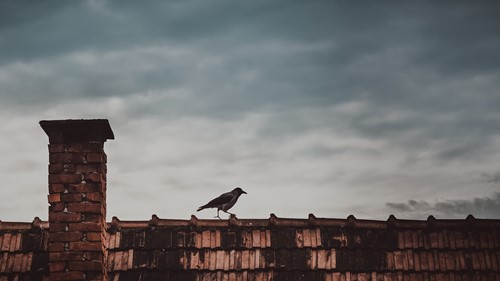
Homeowners sometimes visualize a chimney fire as an event that involves flames shooting out of the top like a flare. While that type certainly happens too often, slow-burning chimney fires tend to go undetected and place unsuspecting household members in harm's way. The good news for homeowners with fireplaces is reducing the risk of a chimney fire ranks among cost-friendly safety measures.
The driving cause of chimney fires largely involves something called "creosote." This dark brown substance coats the inside of a chimney or flue and can ignite on a whim. Highly flammable and unpredictable, creosote buildup results from a wide range of elements.
These typically include vapor, smoke and even slivers of unburned wood. They cool and settle while moving upward from the fire through cooler areas of the chimney. Often, a natural accumulation point evolves. Once thick enough to reduce exhaust space, it can either turn into a smoldering burn or flash fire.
One of the best strategies to reduce creosote buildup involves using only select wood or specially manufactured logs. This generally means burning hardwoods that have dried and been seasoned for one year. Seasoned wood usually produces 20 percent less creosote. It's also essential to avoid softwoods such as pines with high sap content. Most manufactured logs identify what their specialty is on the packaging, so look for those designed to reduce buildup.
Older homes typically have either a flue made from traditional fireclay or none at all. More modern homes sometimes have inserts, while new construction may enjoy insulated flue products. Having an adequate flue protects your household from a house fire by helping to contain the blaze. The safety measure involves preventing fires and sparks from permeating bricklayers and reaching surrounding structural timbers and other combustible materials.
If you own an old home without a flue system, you may want to have one installed promptly. Those with fireclay flues should be heavily inspected. This material can begin to degrade in 5-15 years, rendering it less than adequate.
The newer insulated flue products rank among the better options for two reasons. First, it keeps creosote off the brickwork. Second, the insulation is designed to even out heat distribution as smoke, vapor and wood fragments rise. This generally means that homeowners are less likely to sustain flammable buildup at a particular point. They're also relatively simple to install and replace as needed.
These rank among the best ways homeowners can reduce the risk of a chimney fire and keep their households safe. It's also essential to have a chimney cleaned and serviced regularly.

Kim Clark started her real estate career in 1999 and shortly thereafter obtained her Broker’s license in 2002. After working for larger, corporate offices, she realized that her business and clients needed a more personalized and flexible firm. She founded Bayside Realty Consultants in 2007 offering a space of unity, collaboration and encouragement for agents and their clients. Kim specializes in the unique Cape Cod market comprised of primary, vacation and investment properties.
She says "It is great to be a part of helping make a homeowner's dreams come true". Clients and their individual needs can make things very exciting! Kimberly's enthusiasm is contagious and it has been a real asset in her successful career. She says, "Never quit. Just do what you like and the rest just falls into place." She is certified in several real estate designations including GRI, CBR, CRS, e-Certified, and a certified trainer.